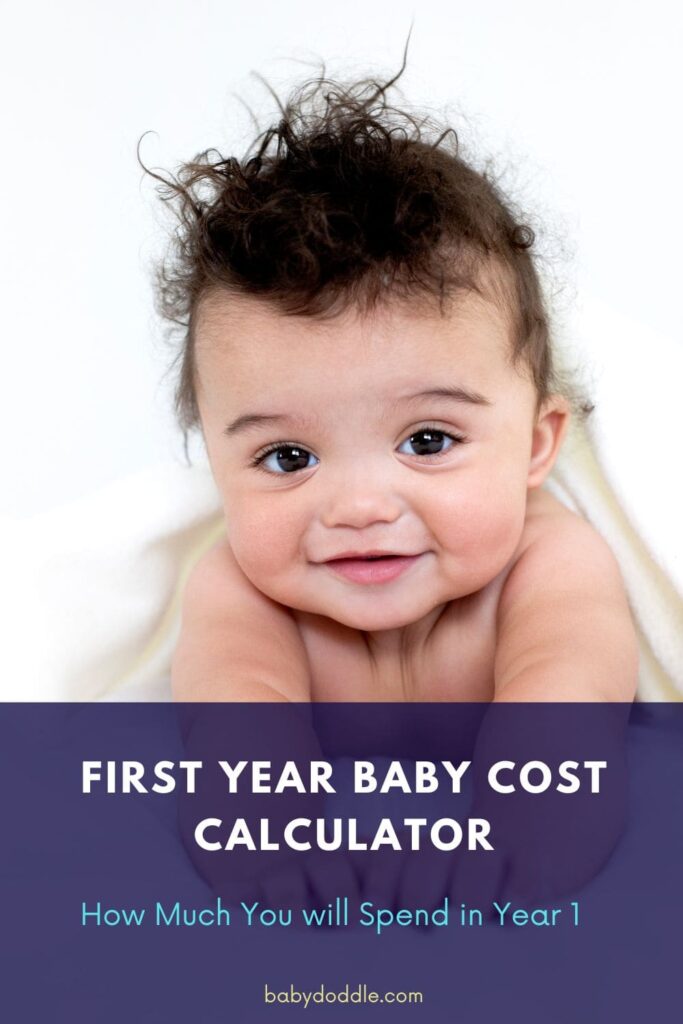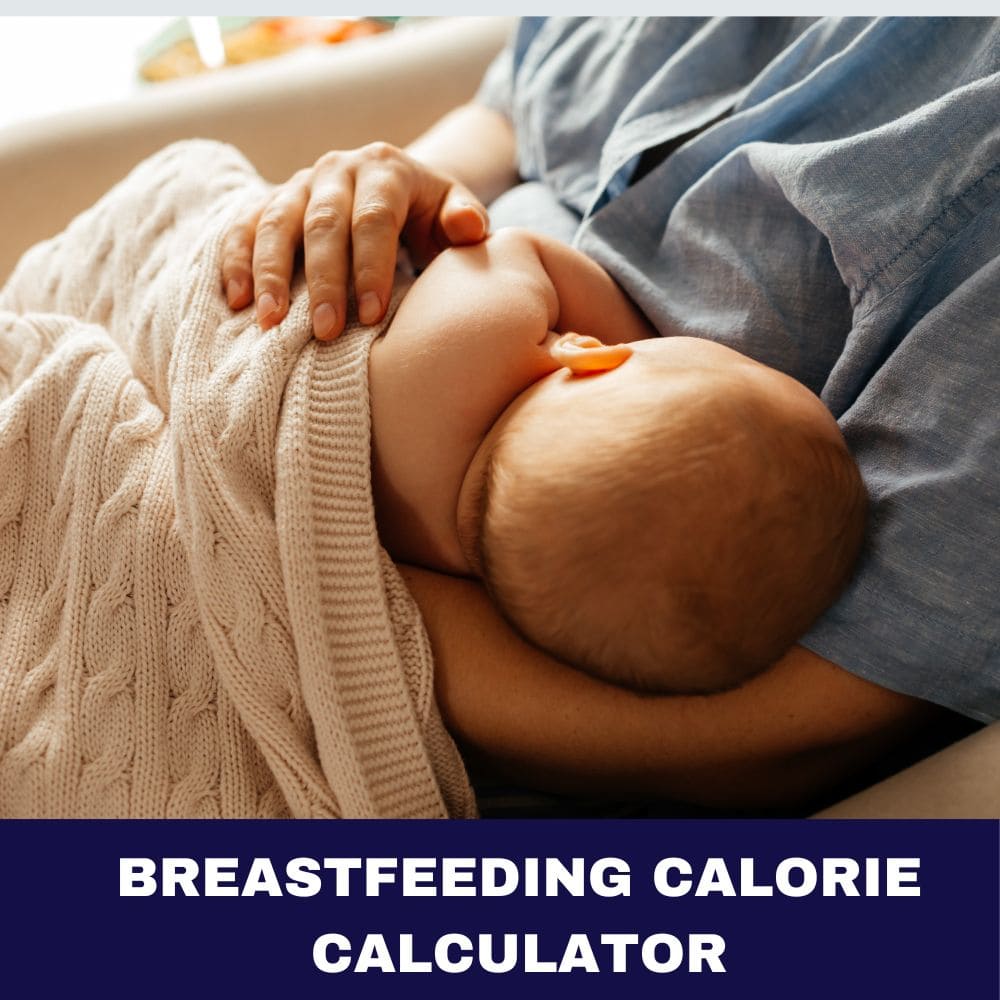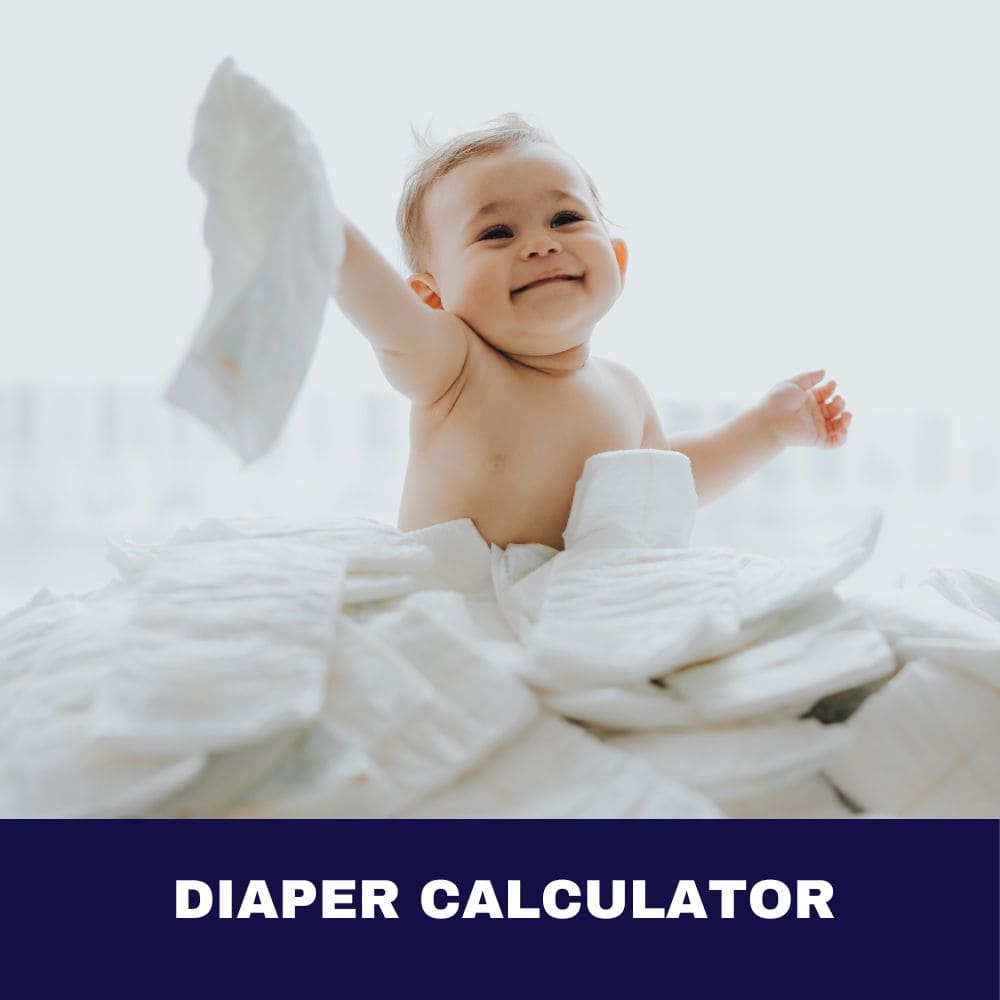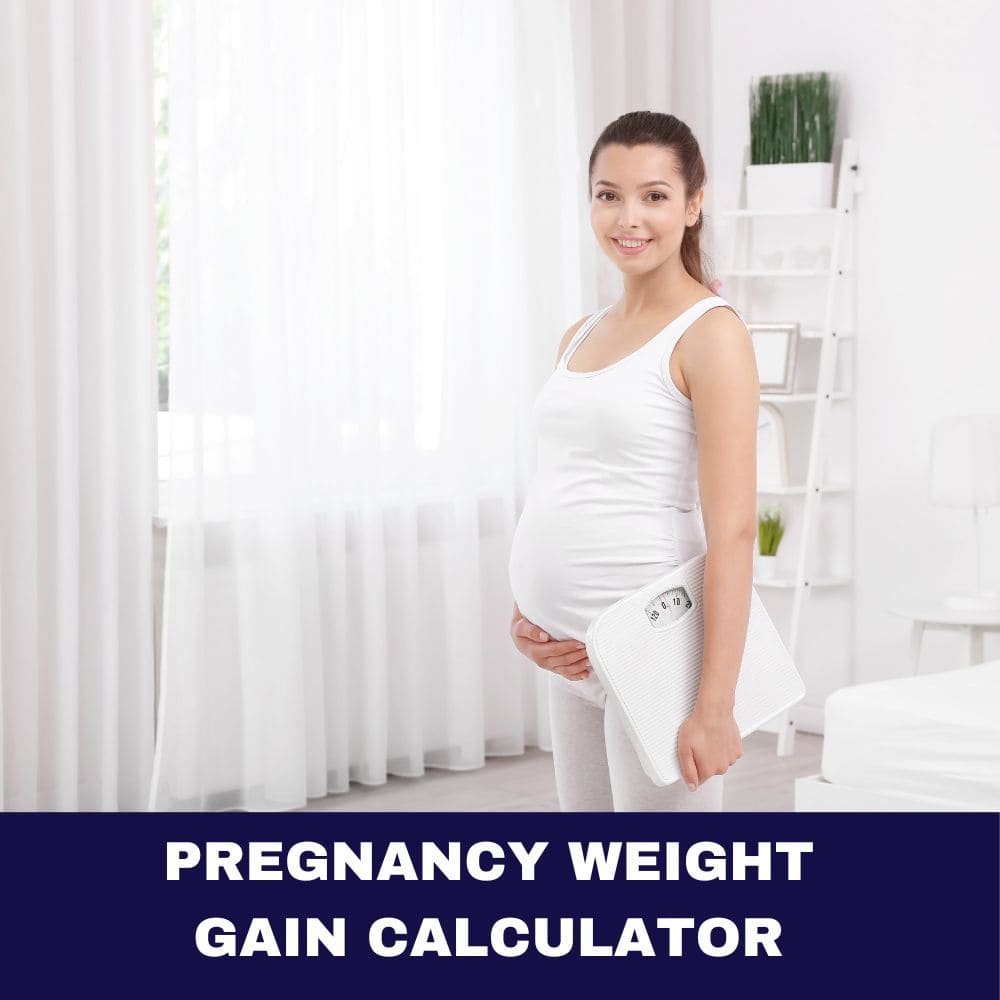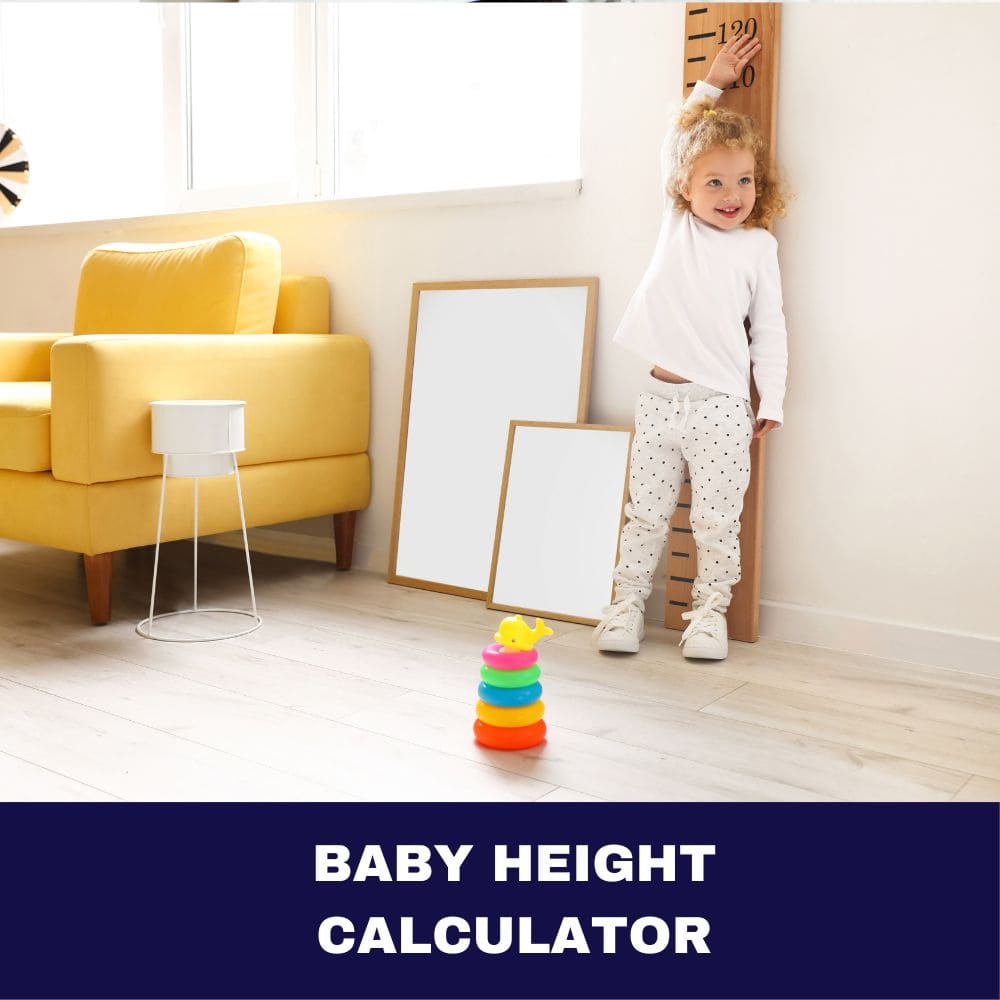This First Year Baby cost calculator will help you budget for your new arrival!
How to use Our First Year Baby cost calculator
Our calculator makes tallying up your estimated baby costs a breeze! Just follow these simple steps:
Start by selecting if you’re budgeting for one baby or twins. For twins, some items are doubled which is noted with a (2x).
Next, choose your country. If you’re in the US or Poland, average pricing estimates are provided. Otherwise, enter your own estimates based on local costs.
Know your exact prices? Feel free to override the estimates by entering your own precise numbers.
For a handy reference, click “show price range” to see the typical low to high cost for each item. For example, cribs can range from $120 to $800 depending on features, materials, and brands.
Once all sections are completed, the tool calculates your grand total first year cost estimate. It also sums up the subtotals per category so you can see where costs are concentrated.
Finally, a pie chart illustrates a percentage breakdown of how much you can expect to spend on each area like medical, gear, childcare and more.
Our intuitive calculator takes the guesswork out of adding up baby’s first year expenses! In minutes you’ll have a customized estimate to start budgeting and planning for your little one.
Bringing a new baby home is one of life’s most joyful moments. But it can also be quite an adjustment, both emotionally and financially. As an expectant parent, it’s wise to do some planning and budgeting for the major expenses headed your way in the baby’s first year.
In this article, we’ll go over the average costs parents can expect during the initial 12 months. From medical bills to gear and supplies, you’ll get a realistic picture of how much you’ll likely spend. We’ll also share some helpful tips on how to keep costs manageable. Equipped with this information, you can feel prepared and confident to welcome your little one!
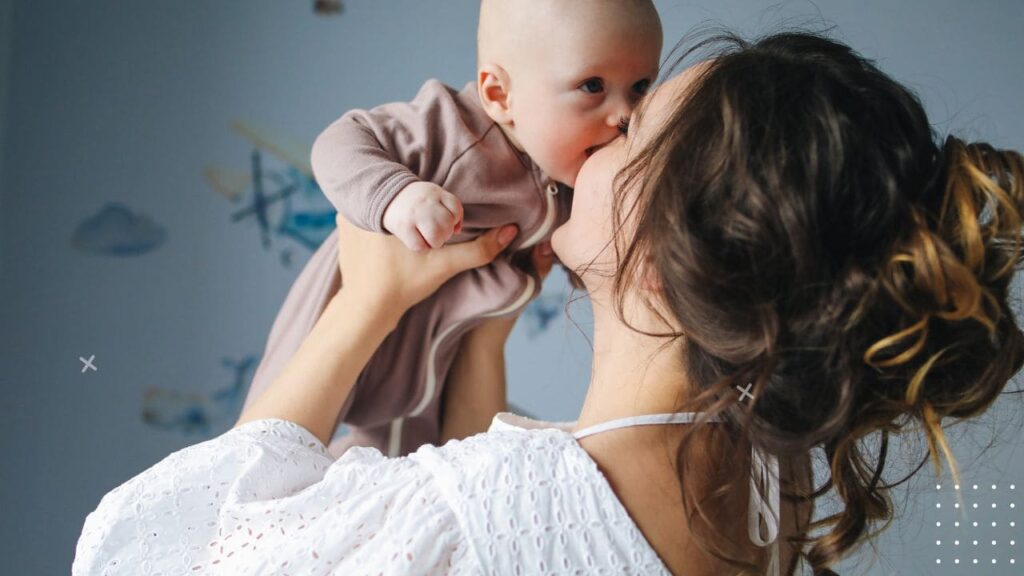
Preparing While Pregnant
Expectant mothers can take steps during pregnancy to financially prepare for baby’s arrival:
- Track current spending and make a budget early to estimate costs.
- Research big expenses like medical care, childcare, gear.
- Start an emergency fund and save for upfront costs.
- Make registries for necessities to get completion discounts.
- Take a “babymoon” trip before baby comes when it’s easier.
- Take childbirth, breastfeeding, and infant care classes.
- Enroll in benefit programs you may qualify for.
- Get needed medical care and checkups done now.
- Take parental leave if available and discuss options with your employer.
- Freeze meals or get gift cards to stock up on prepared food.
Planning ahead will give you time to ensure you have the essentials covered.
Medical Costs Add Up Quickly
The first major outlays will be medical in nature. This includes prenatal, delivery, and postnatal care for mom and baby. According to the Kaiser Family Foundation, the average vaginal birth costs around $13,000 with insurance. A C-section bumps it up to around $23,000.
| Delivery Type | Average Cost with Insurance |
|---|---|
| Vaginal birth | $10,000-$15,000 |
| C-section | $15,000-$25,000 |
Your specific charges will depend on your healthcare coverage and provider. But it’s safe to estimate about $10,000-$15,000 in medical bills for a standard delivery.
After birth, your newborn will need regular checkups and immunizations. Plan on at least six well-baby visits in the first year. With insurance, parents pay $100-$200 per visit. So budget another $600-$1,200 for pediatrician care.
Total medical costs: $10,600-$16,200
Pro Tip: Ask your health providers for an estimate of your share of costs before delivery. This helps avoid surprise bills. Also, make sure baby is added to your insurance plan promptly.
| Medical Need | Average Cost |
|---|---|
| Delivery and hospital stay | $10,000-$15,000 |
| OBGYN prenatal visits | $2,000-$4,000 |
| Pediatrician visits | $500-$1,000 |
| Vaccinations/tests | $500-$1,000 |
| Prescriptions | $300-$500 |
| Total | $13,300-$21,500 |
Gear and Supplies Get Pricey
Now let’s talk essential gear and supplies. As a new parent, you’ll likely feel compelled to buy every cute onesie and gadget on the market. Resist the urge and stick to necessities during the newborn days when items get outgrown quickly.
A safe crib with a quality mattress is non-negotiable. Expect to spend $200-$600 for a durable crib and mattress set. A bassinet can also be useful for keeping baby close in the early months.
A car seat is another must, generally running $150-$300. Invest in this – it’s not worth buying used. A stroller ($100-$300) and baby carriers ($50-$150) will make outings doable.
For feeding, if breastfeeding – invest in a quality breast pump ($150-$300), nursing pillow ($30-$50), and accessories. If formula feeding – bottles, sterilizer, and formula will run around $1,500 for the year.
Diapers and wipes are another big recurring cost, averaging $800-$1,200 annually.
Basic gear/supplies: $3,000 – $5,000
Pro Tip: Join local parent groups to find lightly used items. Prioritize needs over wants to control costs.
Sample Baby Registries and Checklists
Baby registries or shopping checklists help ensure you get the necessities without going overboard on extra fluff. Here are some essentials to include:
- Car seat, stroller, crib, mattress
- Bassinet or co-sleeper
- Bottles, formula or breast pump
- Diapers, wipes, creams
- Outfits, socks, hats
- Blankets, burp cloths, swaddle
- Baby bath, towels, washcloths
- Baby monitor, safety items
- Carrier, nursing pillow, pacifiers
- Medical kit, grooming tools
- Books, toys, play mat
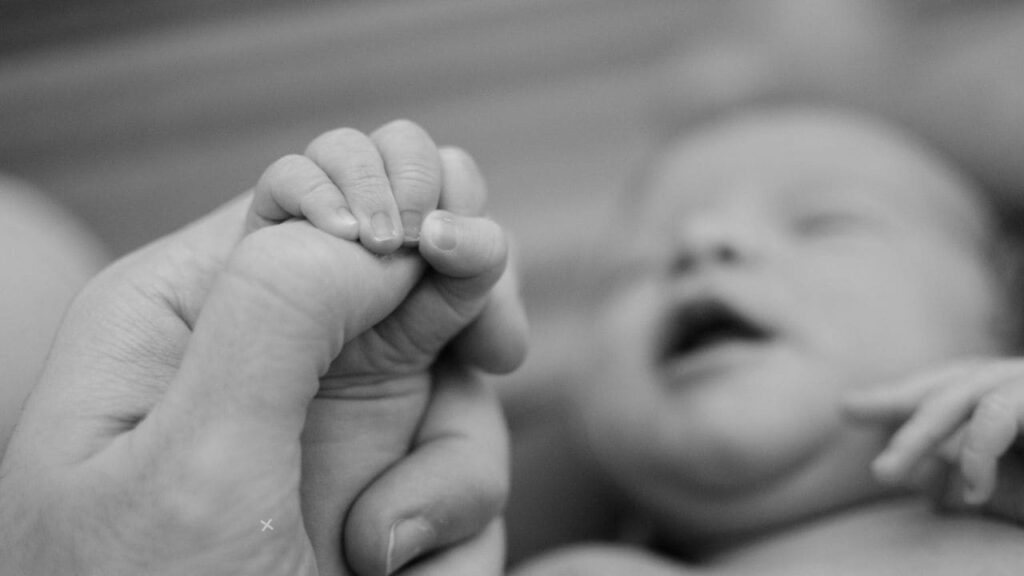
Furniture and Decor Add Up
Beyond gear, you’ll likely need to baby-proof your home and decorate the nursery. Essentials like a crib and dresser are absolute necessities. If you can breastfeed in a comfy chair and change diapers on a basic pad or surface – you can probably skip the nursing glider and changing table.
However, many parents still like having key nursery furniture like:
- Glider ($300-$600)
- Dresser ($200-$500)
- Changing table ($100-$300)
- Decor such as wall art, rug, lamp etc. ($200-$500)
Then budget for baby-proofing items like outlet covers, edge cushions, safety gates etc. ($200-$500). Though it may seem basic, these furnishings and safety items quickly add up!
Furniture and decor: $1,000 – $2,400
Pro Tip: Check secondhand shops and online marketplaces for quality used furniture at a fraction of the cost. Get safety items new so you know they work properly.
Gender Neutral Baby Gear
For those not finding out the gender until birth, go gender-neutral:
- Choose nursery items in creams, yellows, greens, and whites.
- Select clothes in colors like grey, yellow, green.
- Pick toys suitable for any baby, or in gender-neutral colors.
- Registry must-haves come in neutral tones from many brands.
- Convert hand-me-downs to neutral with ribbons, and appliques.
- Gender neutrality makes reusing for future children easier.
With some creative planning, you can gear up without picking pink or blue!
Childcare Costs Add Up
Many new parents choose to take a short parental leave after birth. But at some point in the first year, childcare costs come into play. Centers in metropolitan areas can run $300-$350 per WEEK. A nanny may charge $15-$20 per hour.
Even just two days a week of childcare can add up to $4,000-$10,000+ in year one. And rates are higher for infants than older children. If you’ll be going back to work, be sure to account for childcare in the budget.
Childcare costs: $4,000 – $10,000
Pro Tip: See if you qualify for childcare subsidies through social programs or employer benefits to offset this major cost.
Costs for Single Parents
As a single parent, carefully prioritizing expenses is crucial:
- Seek support from family to offset childcare and other costs.
- Look into government aid programs, grants and subsidies.
- Join single parent support groups for hand-me-downs, advice.
- Prioritize necessities – buy others used or save up over time.
- Consider work-from-home side gigs for flexible income.
- Use low-cost community resources like free events, and classes.
- Shop discount stores, generic brands, buy in bulk.
- Consider a smaller living space to save on rent.
While challenging, single parenthood is possible with planning! Don’t be afraid to ask for help.
Miscellaneous Essentials Not to Overlook
A few other first-year expenses that can sneak up on you:
- Stocking up on extra baby items: Extra clothes, blankets, burp cloths, pacifiers etc. ($500-$1,000)
- Toys and books: Though babies don’t need much at first, these start accumulating ($200-$500)
- Extra medical copays: For sick visits, medications, unforeseen needs ($300-$500)
- Family lifestyle changes: Going out less, higher utilities from baby laundry etc. ($500-$1,000)
Miscellaneous essentials: $1,500 – $3,000
Pro Tip: Join local parent groups to get hand-me-downs. Use the library for free children’s books. Take advantage of free community resources like mommy and me classes.
Hidden Costs of Having a Baby
Beyond the obvious baby gear and medical bills, here are some hidden costs to be aware of:
- Home modifications like baby proofing, new paint, installing safety gates etc.
- High utility bills from laundry and running amenities 24/7.
- Parking fees at doctor’s offices for frequent visits.
- Increased car insurance rates.
- Higher grocery bills even with breastfeeding.
- Medical copays and prescriptions if breastfeeding doesn’t work out.
- Extra pet care costs if you can’t take them everywhere anymore.
- New or bigger car if your current one won’t accommodate a baby.
Total First Year Cost Estimate
Adding up the average costs in each of the key categories above, parents can expect to spend $20,600 – $37,100 in baby’s first year. This wide range accounts for choices in things like childcare, medical needs, insurance coverage and new vs used items.
The major first-year costs break down as:
- Medical: $10,600-$16,200
- Gear/Supplies: $3,000-$5,000
- Furniture/Decor: $1,000-$2,400
- Childcare: $4,000-$10,000
- Miscellaneous: $1,500-$3,000
Of course, your exact costs will depend on your family’s specific choices and situation. But this gives you a realistic estimate to budget for.
Multi-Child Cost Considerations
For second, third or subsequent children, costs are a bit different:
- Reuse gear like cribs, strollers, and carriers from first child.
- Buy new car seats, bottles, and clothes for safety and hygiene.
- Shared childcare often costs less than individual care.
- Leverage hand-me-downs more for clothes, toys, books.
- College savings contributions need to be higher.
- May need a larger home and vehicle.
- Food, utilities, and healthcare for additional child adds up.
While certain big expenses are avoided, the incremental costs per additional child still add up. Budget accordingly!
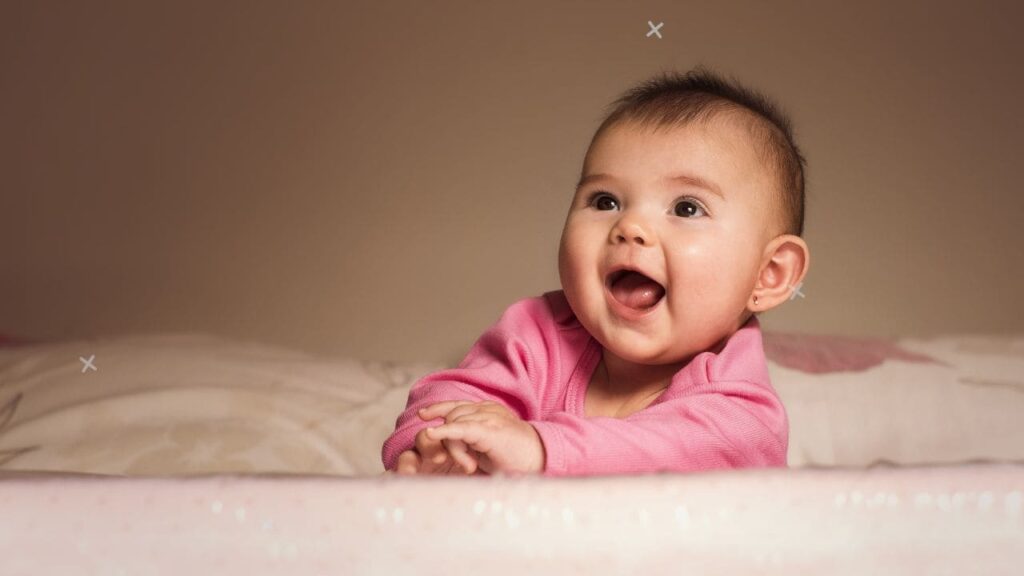
Managing Ongoing Costs Beyond Year One
While the first year requires huge upfront purchases, there are ongoing costs to budget for as your baby grows beyond infancy. Expenses like food, clothing, childcare and activities ramp up as your child reaches toddler and preschool ages.
Healthcare costs also continue with well-child checkups, dentist visits, and unforeseen illnesses or injuries. Budgeting a few thousand per year for out-of-pocket medical expenses is wise.
As your child grows, you may need a bigger car or home to accommodate more space needs. Educational toys, classes and activities also begin around preschool age.
Childcare remains a major cost if parents work outside the home. While usually less than infant care, preschool and daycare still ranges $200-$300 per week in many areas.
It’s essential to look beyond the initial newborn phase and think about costs in the context of your child’s whole upbringing. Keep tracking expenses and adjusting your budget annually.
| Expense | Average Cost |
|---|---|
| Childcare | $800-$1,500 |
| Diapers and wipes | $80-$100 |
| Formula and food | $150-$300 |
| Medical copays | $30-$60 |
| Clothing and gear | $50-$150 |
| Toys and activities | $30-$75 |
| Additional contingency | $100-$200 |
| Total | $1,240-$2,385 |
Ways to Prepare Your Budget
While the costs may seem daunting, there are many ways to thoughtfully prepare, cut expenses where you can, and set your family up for financial success. Here are some money-saving tips:
- Track your current expenses to see where you can trim back and redirect funds to the new baby budget.
- Make big-ticket purchases like strollers and car seat early so you can take advantage of completion discounts and sales.
- See if your company offers flexible spending accounts to use pre-tax dollars on medical costs and childcare.
- Take advantage of hand-me-downs, and consignment shops, and buy quality items used when possible. Prioritize safety for car seats, cribs, etc.
- Join local parent groups and networks to get free or cheap clothes, toys and more that families are done using.
- Look into government aid programs, grants and subsidies you may qualify for. These help offset childcare, medical, and other costs.
- Talk to your health providers about payment plan options to make medical bills more manageable.
Following these budgeting tips and focusing your spending on the essentials outlined above will help you provide everything your baby needs in the most cost-effective way possible.
Taking Advantage of Tax Benefits
There are tax credits and deductions to offset some key costs of having a baby:
- Child tax credit: $2,000 credit per qualifying child under 17. Phase-out limits apply.
- Child care credit: Credit for up to 35% of eligible expenses for care of dependents under age 13.
- Dependent FSA: Contribute up to $5,000 pre-tax for childcare expenses.
- Medical and dental expenses paid out of pocket may be tax deductible if they exceed 7.5% of adjusted gross income.
- Claim your baby as a dependent to receive an additional exemption and tax benefits.
Consult a tax professional to maximize your available credits and deductions as a new parent!
Creating a Baby Budget
Making a detailed baby budget helps you prepare for the major new expenses ahead. Here are some tips:
- Track current household spending to identify areas you can cut back on.
- Research estimated costs based on your area.
- Add up essential gear, supplies, medical costs etc.
- Factor in ongoing costs like formula, diapers, and childcare.
- Use baby cost calculators online to estimate your total.
- Make room for surprise expenses by overestimating a bit.
- Open a separate savings account and set aside money monthly.
- Use apps to organize your registry and track spending versus budget.
- Adjust the budget annually as costs change.
Welcome to Parenthood!
Welcoming a new baby is an amazing whirlwind. While the costs may seem overwhelming at first, remember that parents make it work in all types of financial situations. With planning, prioritizing necessities, and utilizing available aid/support, you’ll be able to provide everything your little one needs in their pivotal first year.
If costs still feel daunting, reach out to parent groups or financial advisors for guidance. And try to focus on the joys ahead rather than just the financials. Soon you’ll be so in love with your baby that dollar amounts will feel less important. This season in life flies by so quickly. Enjoy every exhausting, messy, beautiful moment with your little one!
FAQ – First Year Baby cost calculator
What are the biggest first year baby costs?
The most expensive costs in baby’s first year are usually medical expenses from delivery and newborn care, childcare if resuming work, and essential gear like crib, car seat, stroller. Total medical costs average $10,000-$15,000. Childcare can run $10,000+ as well. Gear and supplies average $3,000-$5,000.
How can I reduce the costs of having a baby?
Join parent groups to get free hand-me-downs. Buy quality used items when possible. Take advantage of completion discounts on registries. Prioritize necessities first. Use coupons and generic brands when suitable. Look into tax credits, grants, aid programs you qualify for.
How much will I spend monthly on a baby?
Estimates vary but plan on $1,200-$2,500 monthly for things like: diapers, wipes, food ($200-400), medical copays ($50-100), clothing/gear ($100-300), baby activity costs ($50-200), and childcare ($800-1500).
What are hidden costs of having a baby?
Hidden costs may include: home/car modifications for safety, higher utilities, medical copays, parking fees and transportation costs for appointments, increased grocery and household bills, higher car insurance rates.
When should I start budgeting for baby expenses?
Ideally budget as soon as you find out you are pregnant. Track your current spending, make an initial budget for the big first year costs. Open a savings account and start setting aside money monthly. Adjust as you research exact expenses. Continue budgeting annually.
